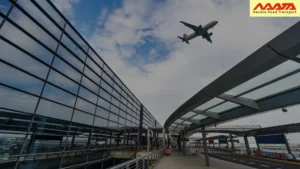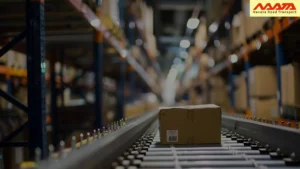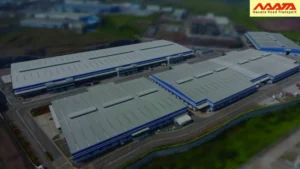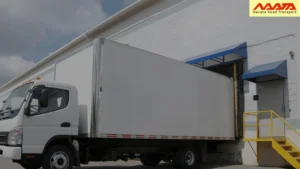
What Is Inbound Logistics and How It Work?
Table of Contents
What Is Inbound Logistics?
Inbound Logistics is a term used to describe the process of moving goods, raw materials, and supplies from suppliers to a business’s facility. It covers every step from sourcing and ordering to transportation, receiving, storage, and inventory management. In simple terms, the inbound logistics meaning is about making sure you have the right materials, in the right place, at the right time — and at the lowest possible cost.
Inbound logistics in supply chain management focuses on the supply side of the equation. While outbound logistics is about delivering products to customers, inbound logistics ensures production lines have what they need to keep running.

Why Inbound Logistics Matters?
A smooth inbound logistics process helps businesses:
- Keep production running without delays
- Reduce transportation and storage costs
- Maintain healthy inventory levels
- Build strong supplier relationships
- Improve supply chain visibility and predictability
If inbound logistics management breaks down — for example, if materials arrive late, damaged, or in the wrong quantity — production slows, costs rise, and customers may be left waiting.
Process of Inbound Logistics Works: Step-by-Step
Inbound logistics involves several coordinated activities:
- Planning
Before materials move, businesses plan what they need, when they need it, and how it will arrive. This includes forecasting demand, setting budgets, and choosing transportation methods.
- Sourcing and Procurement
This is where companies identify and select suppliers. Price, quality, reliability, and delivery speed are key factors. Negotiating contracts and building long-term partnerships can reduce costs and risks.
- Purchasing
Once suppliers are chosen, purchase orders are created for the required quantities. This stage also includes confirming delivery timelines and payment terms.
- Transportation
Goods are moved from the supplier’s location to the company’s facility. This could involve road, rail, air, or sea transport — often managed through third-party logistics providers (3PLs).
- Receiving
When shipments arrive, teams check them against the purchase order for quantity and quality. Damaged or incorrect items are documented and returned if necessary.
- Material Handling and Putaway
Items are moved from receiving docks to storage areas. Proper labeling and organized shelving help streamline later retrieval.
- Storage and Warehousing
Goods are stored in conditions that protect their quality, such as temperature-controlled spaces for perishables. Efficient storage systems reduce wasted time and space.
- Inventory Management
Stock levels are monitored to ensure enough materials are on hand without overstocking. Modern businesses use inventory software or warehouse management systems (WMS) for real-time tracking.
- Reverse Logistics
Sometimes goods flow back to the business — for example, defective items from customers, returns for refurbishment, or recyclable materials. This process is also part of inbound logistics in supply chain management.
You May Also Like Reading: Outbound Logistics – Understanding Definition, Process and Activities
Benefits of Inbound Logistics
Understanding what is inbound logistics is not just about knowing the process — it’s also about recognizing its benefits. Effective inbound logistics management offers:
Cost Reduction – Efficient planning in inbound logistics in supply chain management lowers transportation, warehousing, and procurement costs.
Improved Quality Control – Proper monitoring ensures that materials meet standards before entering production.
Production Efficiency – A well-structured inbound logistics process helps maintain a steady flow of materials, avoiding downtime.
Flexibility and Responsiveness – Strong inbound logistics management enables quick adjustments to changes in demand or supply.

Challenges in Inbound Logistics
Managing the inbound logistics process isn’t always smooth. Common challenges include:
- High Transportation Costs – Inefficient routing, small shipment sizes, or lack of negotiation with carriers can push costs up.
- Unpredictable Lead Times – Delays caused by weather, customs clearance, or supplier issues can disrupt production.
- Limited Visibility – Without real-time shipment tracking, businesses may carry excess inventory “just in case,” which ties up cash.
- Receiving Bottlenecks – Too many deliveries arriving at once can overwhelm docks and staff.
- Supplier Reliability Issues – Quality problems or inconsistent delivery performance can hurt operations.
How to Optimize Inbound Logistics
Businesses can make inbound logistics management faster, cheaper, and more reliable with the following strategies:
1. Strengthen Supplier Relationships
Suppliers who understand your business needs are more likely to prioritize you in tight situations. Clear supplier compliance programs also set expectations for delivery standards.
2.Use Technology for Visibility
A Transportation Management System (TMS) helps compare carrier rates, schedule shipments, and track deliveries. A Warehouse Management System (WMS) streamlines receiving, storage, and picking.
3.Consolidate Shipments
Instead of paying for multiple small loads, combine shipments to make full truckloads (FTL) and reduce costs. 3PLs can help consolidate freight from multiple vendors.
4. Improve Forecasting
Accurate demand forecasting ensures you order the right quantities at the right time, avoiding both shortages and excess stock.
5. Implement Efficient Receiving Processes
Use appointment scheduling for trucks, designate specific docks for certain suppliers, and train staff to process deliveries quickly and accurately.
6. Plan for Reverse Logistics
Have a system for handling returns, defective products, or recyclable materials quickly so they don’t clog storage space.
Measuring Success in Inbound Logistics
Tracking performance helps spot problems before they escalate. Key performance indicators (KPIs) include:
- On-Time Delivery Rate – Percentage of shipments arriving as scheduled.
- Lead Time – Time from placing an order to receiving goods.
- Shipping Cost per Unit – Measures cost-efficiency.
- Inventory Turnover – How quickly stock is sold and replenished.
- Fill Rate – How often customer or production needs are met without delay.

Conclusion
Inbound Logistics is the backbone of efficient business operations. It ensures that materials flow smoothly from suppliers to your facility so production and delivery can happen without disruption.
By focusing on strong supplier relationships, using the right technology, consolidating shipments, and streamlining receiving processes, businesses can reduce costs, improve efficiency, and gain a competitive edge.
Powered By 360Presence








